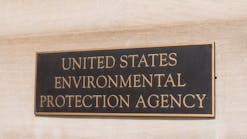US House panel grills PHMSA’s interim chief over pipeline safety delays
Members of a US House Energy and Commerce subcommittee asked US Pipeline and Hazardous Materials Safety Administration Interim Executive Director Stacy Cummings why several significant provisions of a federal pipeline safety law passed in 2011 have yet to be implemented (OGJ Online, Sept. 21, 2011).
“Unfortunately, the issue of pipeline safety too often takes a back seat to other matters until an incident forces us to pay attention,” said Rep. Bobby Rush (D-Ill.), the Energy and Power Subcommittee’s ranking minority member, in his opening statement at the July 14 hearing.
“This time, it was a pipeline accident near Santa Barbara in May that spilled thousands of barrels of crude oil,” Rush said. “More recently, there was a smaller incident in my home state on a pipeline owned by the same company, Plains All American. That’s two incidents within 2 months.”
In his opening statement, Subcommittee Chairman Ed Whitfield (R-Ky.) declared, “It has been more than 3 years since the Pipeline Safety Act was enacted, and PHMSA’s implementation has not been satisfactory. Many of the provisions have not been completed, including several described as key mandates with potentially large impacts on pipeline operations nationwide.”
Sixteen of the law’s 42 mandates have not been adopted, “and we know you can’t issue a regulation without [the White House Office of Management and Budget’s] approval,” Whitfield told Cummings later in the hearing. “Everyone knows this administration’s main priority is the Clean Energy Plan. This might be reflected in OMB’s taking so long to approve your implementation plans.”
Using other approaches
But when subcommittee member Pete Olson (R-Tex.) said it seemed PHMSA never would meet its implementation deadlines, Cummings responded that it has completed the task for 26 of the 2011 law’s 46 mandates, and is moving ahead in other ways on the remaining provisions.
“Of the remaining mandates and nonmandated actions, more than 10 will be addressed as part of current rulemaking activities, while others are tied to reports that are currently under internal review, or future rulemakings or information collections currently under consideration,” she said. “PHMSA has also taken numerous other actions using its bully pulpit by conducting public workshops, issuing advisory bulletins, and funding research and development.”
Cummings said the agency is in the process of developing eight rules, five of which will help address Pipeline Safety Act mandates. PHMSA expects to issue many important rules that are important priorities and address significant mandates—including requirements for pipelines carrying natural gas and hazardous liquids—by yearend, she added.
“Our significant rules undergo interagency review at OMB in accordance with Executive Orders 12866 and 13563,” Cummings said. “It can take a long time to promulgate rules, but our rulemaking process is careful and methodical. Each step exists to make sure that the rules we publish are effective, efficient, and reflect feedback from all stakeholders and stand up to scrutiny.”
Other witnesses acknowledged her point that developing complicated regulations requires time, putting PHMSA behind schedule under the 2011 law. “The practical consequence of this delay, however, is to erode the confidence of some pipeline companies that their voluntary safety commitments will be consistent with the final rules,” Interstate Natural Gas Association of America Pres. Donald F. Santa said. “Therefore, operators may be reluctant to dedicate the enormous resources needed to implement voluntary pipeline safety commitments.”
‘Arduous at best’
Santa, who formerly served on the US Federal Energy Regulatory Commission, urged committee members not to be too critical of PHMSA for its implementation delays because the regulatory process reaches beyond what it can control. “Indeed, recent press reports have taken the simplistic view that PHMSA can simply draft new regulations and unilaterally bring such regulations into force,” he said. “This narrative ignores the role of [DOT] and OMB in vetting proposed rules before they can be published for public comment. This process is arduous at best.”
Carl Weimer, executive director of the Pipeline Safety Trust, said reviewing PHMSA’s implementation of the 2011 pipeline safety law is hard because so many of the required reports and regulatory changes have not been produced yet. “The slowness of the reporting and rulemaking process seems at odds with the public proclamations of concern and action from the administration,” he said.
While PHMSA is the easiest target because it has been slow to produce those reports and regulations, the agency also has told Congress for years that it lacks the personnel and financial resources to complete its missions on time, Weimer said. “We also have noted that many times PHMSA or personnel within the secretary’s office have completed draft regulations and reports, but those efforts seem to get significantly delayed by the secretary’s office itself or perhaps by the White House Office of Information and Regulatory Affairs,” he said.
Another witness, Stan Wise, a Georgia Public Service Commission member who also testified on behalf of the National Association of Regulatory Utility Commissioners, said PHMSA recommended that gathering lines begin to be federally regulated in a May 15 report to Congress. Gathering lines have grown larger as production technology has been applied with some 42 in. in diameter and operating at pressures up to 2,000 psig, he told the subcommittee.
“These lines, even if they are located in rural areas, act more like transmission lines than the historic gathering lines,” Wise said. Earlier, Cummings told the subcommittee that PHMSA was “looking at ways we can capture more information about gathering lines, and how it might fit into our authority.”
Contact Nick Snow at [email protected].

Nick Snow
NICK SNOW covered oil and gas in Washington for more than 30 years. He worked in several capacities for The Oil Daily and was founding editor of Petroleum Finance Week before joining OGJ as its Washington correspondent in September 2005 and becoming its full-time Washington editor in October 2007. He retired from OGJ in January 2020.

